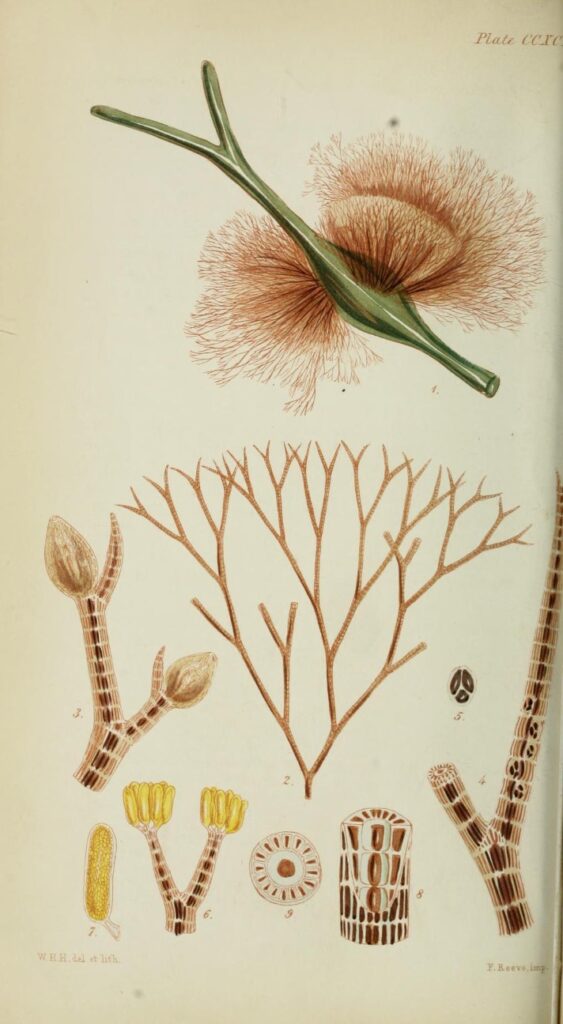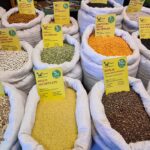Guest post by Justin Cantafio (WorldFMC member of Farmers’ Markets of Nova Scotia)
The pressure was on. Two dear friends were set to arrive here in Dartmouth Nova Scotia in two short days’ time, visiting from just about as far away from the sea as you can get in Canada: rural Saskatchewan. The heart of the prairies. The land of the endless sky. But these friends are food people. Farmers. And I knew I had to treat them to a seafood experience they wouldn’t forget.
Before diving into the bountiful world of farmers’ markets, I once plied my trade here in Nova Scotia as a fishmonger. I literally sold sustainable seafood by the seashore, quickly learning the ins and outs of the bounty of locally available fish, seafood, and seaweeds available along Canada’s Atlantic coast. It became an unspoken duty to my landlubber friends from other parts of Canada to bring them to restaurants serving up the best seafood the region has to offer.
I booked us a table at EDNA, a trendy restaurant on the other side of the harbour in Halifax’s thriving North End neighbourhood. I scanned the menu and was instantly shocked. “Seared halibut cheeks with sea truffle emulsion”. Sea truffle!? “What the hell is that?” I thought. It had to be a ruse. A crafty contrivance to capture the imagination of landbound folks like my prairie pals. But not me. No, I was a fishmonger after all, and I thought I knew everything there was to know about local seafood and sea vegetables.
Well, it turns out I didn’t. After some quick and discrete research on my phone, I found a video of two women foraging for this unremarkable seaweed in Northern Norway. I immediately recognized it—I’d been walking on it my entire life! I laughed and told my friends about it and was then treated to some of the finest halibut cheeks I’ve ever tasted. The sea truffle emulsion added a delightfully umami earthiness to the dish. Truffles. I was tasting truffles! I knew then and there that I had to forage some of this for myself.
I’ve spent most of my life in Atlantic Canada and have always had the great pleasure of enjoying frequent visits to my family cottage. Nestled precariously close to the rocky shores and unrelenting surf of the Bay of Fundy, the cottage affords an immersive, fully off-grid experience and sweeping views of the highest tides in the world. The tides here are massive—twice a day more water than the combined flow of all the world’s rivers combined empties and fills this bountiful bay!
This means massive shorelines to explore at low tide; a goldmine for seaside foragers like me. I’ve always enjoyed looking out at the rocky basalt covered in swaths of undulating yellow-green seaweed taxonomists like to call Ascophyllum nodosum, which we call rockweed in Atlantic Canada. Well, it turns out that sea truffle, or Polysiphonia lanosa, just so happens to grow primarily on Ascophyllum species!

Sea truffle is found in the Northwest Atlantic Ocean and has a range that includes Atlantic Canada, New England in the United States, and in Europe including the shores of Greenland, Iceland, and Scandinavia all the way through to Spain. Interestingly, sea truffle is one of only two organisms that contain the same aromatic compounds as Tuber magnatum, the iconic white truffle famously foraged in the Piedmont region of northern Italy.
Sea truffles are a versatile alternative! Seaweeds remain underappreciated in western diets. Not only are they delicious, but they’re also jampacked full of vitamins and minerals. And that minerality, combined with the saltiness of the sea, makes sea truffles incredibly fun to play with in the kitchen.
Not only are they delicious, but they’re also jampacked full of vitamins and minerals. And that minerality, combined with the saltiness of the sea, makes sea truffles incredibly fun to play with in the kitchen.
Since that fateful evening last autumn, I’ve foraged plenty of sea truffle right in front of my cottage, dehydrating tens of mason jars full of the stuff. It’s made for fantastic gifts to friends and family! I’ve been experimenting with it too. I’ve found that it’s a fantastic finishing salt. I’ve made the tastiest homemade truffle popcorn and delighted friends with it. I’ve added it to homemade aioli, which paired wonderfully with local potatoes fried in lard. I’ve sprinkled it into pasta cream sauces and on top of eggs. It’s always a winner. And for those lucky enough to live near the Northwest Atlantic, it’s a frugal find for those craving that truffle taste!

(Photo Credit: Patrick McCarthy).
Featured Photo: Dried sea truffle (Photo Credit: Lofoten Seaweed).






